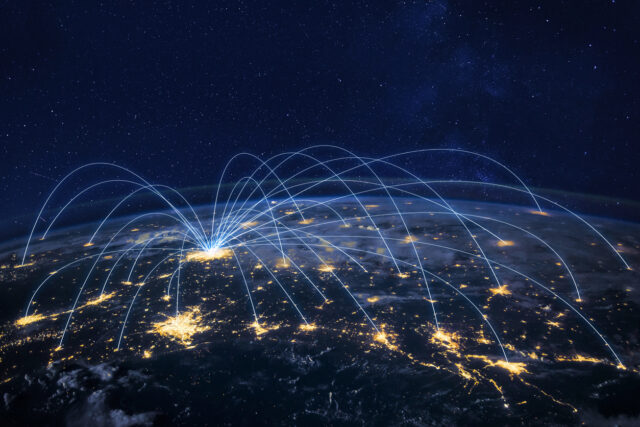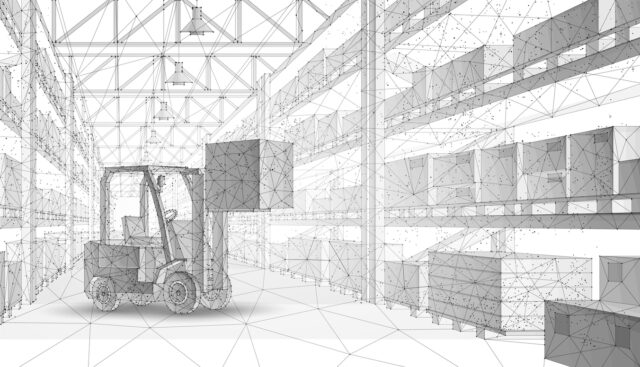Extreme weather events are 2024’s biggest supply chain risk. A report by Everstream Analytics found that climate crisis-related disruptions like hurricanes and extreme heat were the top threat predicted to disrupt supply chains this year.
It’s an obvious and natural progression, seeing as 2023 saw more extreme weather-related disruptions than any year before. Heavy rains and flooding impacted California, Nevada and Utah early last year. As a result, shipments in areas where transportation systems were disrupted dipped by 20% to 30%.
Currently, shipping moving through the Panama Canal has been cut in half by a drought. Historic lack of rainfall has lowered water levels at critical points along the waterway. As a result, ship captains stuck in weeks-long lines are being forced to choose whether to sail around the tip of either South America or Africa, or to pay as much ad $4 million to jump the queue.
Eating into supply chains and food supplies
These delays and extreme weather disruption are especially disruptive to food and agricultural supply chains. Given the perishable, delicate nature of crops and globally plummeting biodiversity, the climate crisis poses unprecedented risks and disruptions to global supply chains,” says David Nickell, Vice President Sustainability & Business Solutions at dsm-firmenich Animal Nutrition & Health. He adds, however, that “this holds doubly true for the agriculture and food sectors.”
Climate change is already affecting food security at the global, regional, and local level. Changes in climate can severely disrupt food production and reduce access to food. Not only this, but the changing climate can also affect food quality and nutritional content. The United States EPA noted in a recent report that food insecurity likely to be exacerbated by extreme weather events. The report also notes: “spikes in food prices after extreme events are expected to be more frequent in the future.” Lastly, they add that “increasing temperatures can contribute to spoilage and contamination.”
An over-globalised food supply chain
These disruptions highlight the cracks already appearing in an over-globalised, delicate food supply chain. The EPA observes that even a single climate-related disturbance to food distribution and transport could significantly disrupt not only the safety and quality of food, but also food access. “For example, the food transportation system in the United States frequently moves large volumes of grain by water. In the case of an extreme weather event affecting a waterway, there are few, if any, alternate pathways for transport,” they note.
Around the world, extreme weather is disrupting our ability to maintain existing supply chains. Nickell adds that the problem will only be exacerbated as supply chain managers are forced to “look for new methods to address the challenges of changing environmental conditions, evolving consumer buying behaviours and increasing demand for animal protein, which is expected to grow 60% to 70% by 2050, driven by population growth and greater affluence in developing economies.”
Hungry for climate data
One of the biggest challenges is that food supply chains can’t just be maintained in the face of climate disruption. At the same time, these systems must be decarbonised to avoid further devastation of the environment.
For companies throughout the food value chain, the majority of their environmental impact stems from Scope 3 emissions. These are emissions tied to farming, ranching, land clearance, and other activities further up the supply chain. These, Nickell adds, are the most complex part of the carbon footprint of food production.
A potential solution, he argues, is better data. “Data-based technologies and advanced Life Cycle Assessment platforms have become pivotal tools to enable scalable measurement and reduction of emissions, enhancing transparency and trust, building supply chain resilience, and driving positive, sustainable outcomes,” he notes.
One application for this technology, he continues, is in the animal protein supply chain. Here, “the ability to capture and analyse granular, feed and farm-level data at scale is fundamental,” Nickel says. “To be useful for measurement and for improving sustainability, that data must cover a product’s full life cycle from farm to fork, be easily shareable, scalable and tailored to various needs, whether at the product or company level.”
Lastly, he adds: “By leveraging the latest, leading technologies and data-driven solutions… the food industry can work towards reducing its environmental impact and meeting the growing demand for sustainable food in a scalable and credible manner.”
- AI in Supply Chain
- Sustainability










